Jingjing Cui
Deep Reinforcement Learning Aided Packet-Routing For Aeronautical Ad-Hoc Networks Formed by Passenger Planes
Oct 28, 2021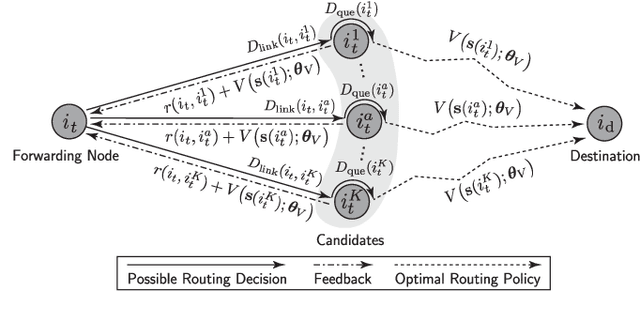
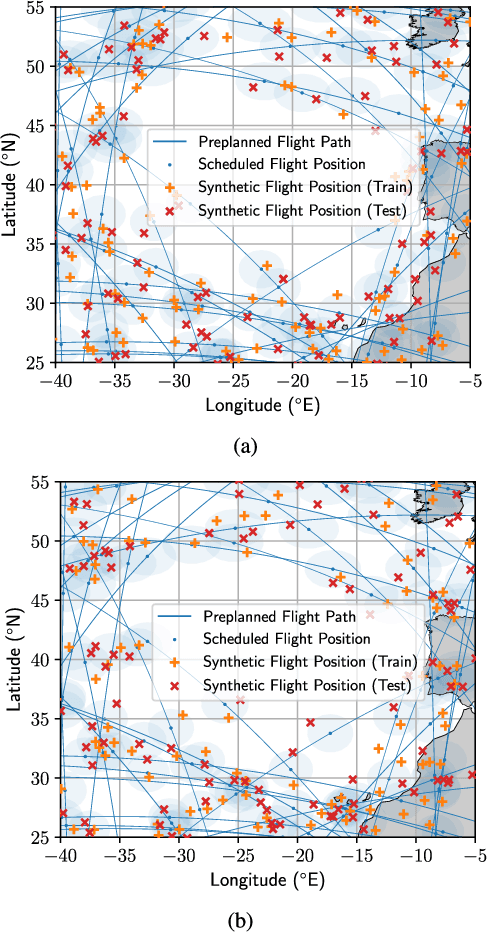
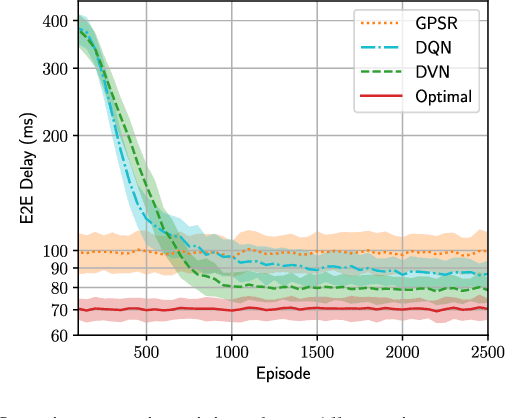
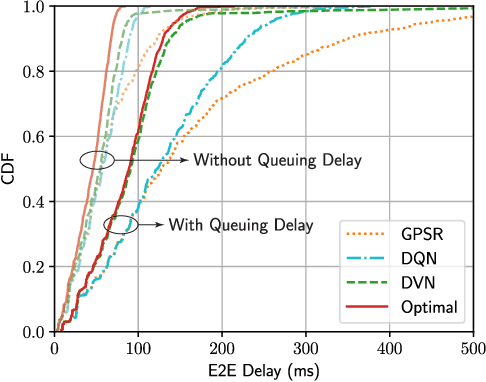
Abstract:Data packet routing in aeronautical ad-hoc networks (AANETs) is challenging due to their high-dynamic topology. In this paper, we invoke deep reinforcement learning for routing in AANETs aiming at minimizing the end-to-end (E2E) delay. Specifically, a deep Q-network (DQN) is conceived for capturing the relationship between the optimal routing decision and the local geographic information observed by the forwarding node. The DQN is trained in an offline manner based on historical flight data and then stored by each airplane for assisting their routing decisions during flight. To boost the learning efficiency and the online adaptability of the proposed DQN-routing, we further exploit the knowledge concerning the system's dynamics by using a deep value network (DVN) conceived with a feedback mechanism. Our simulation results show that both DQN-routing and DVN-routing achieve lower E2E delay than the benchmark protocol, and DVN-routing performs similarly to the optimal routing that relies on perfect global information.
Deep Learning Aided Packet Routing in Aeronautical Ad-Hoc Networks Relying on Real Flight Data: From Single-Objective to Near-Pareto Multi-Objective Optimization
Oct 28, 2021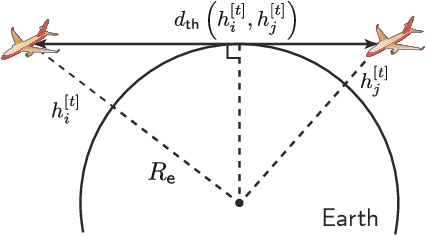
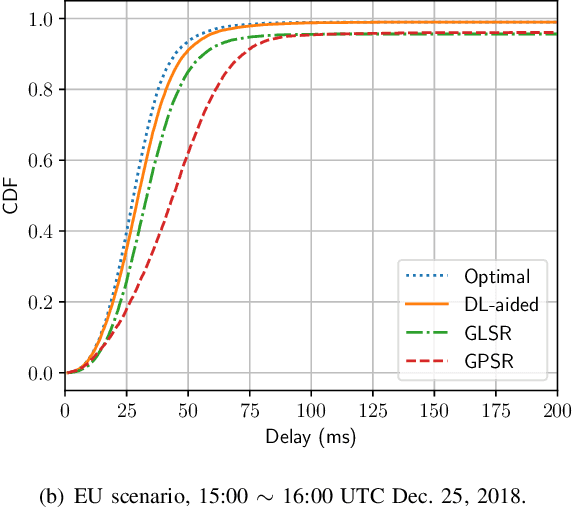

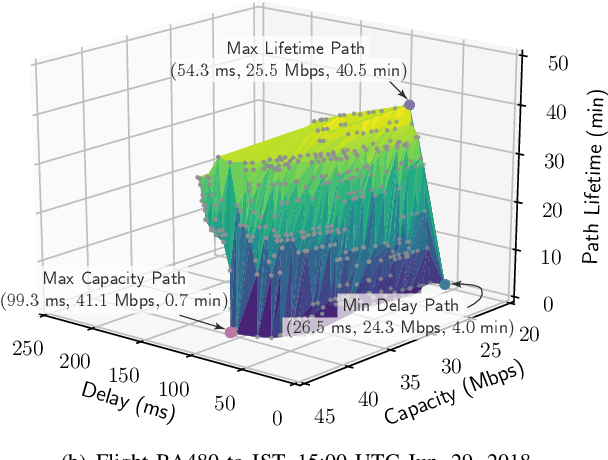
Abstract:Data packet routing in aeronautical ad-hoc networks (AANETs) is challenging due to their high-dynamic topology. In this paper, we invoke deep learning (DL) to assist routing in AANETs. We set out from the single objective of minimizing the end-to-end (E2E) delay. Specifically, a deep neural network (DNN) is conceived for mapping the local geographic information observed by the forwarding node into the information required for determining the optimal next hop. The DNN is trained by exploiting the regular mobility pattern of commercial passenger airplanes from historical flight data. After training, the DNN is stored by each airplane for assisting their routing decisions during flight relying solely on local geographic information. Furthermore, we extend the DL-aided routing algorithm to a multi-objective scenario, where we aim for simultaneously minimizing the delay, maximizing the path capacity, and maximizing the path lifetime. Our simulation results based on real flight data show that the proposed DL-aided routing outperforms existing position-based routing protocols in terms of its E2E delay, path capacity as well as path lifetime, and it is capable of approaching the Pareto front that is obtained using global link information.
Deep Learning Aided Routing for Space-Air-Ground Integrated Networks Relying on Real Satellite, Flight, and Shipping Data
Oct 28, 2021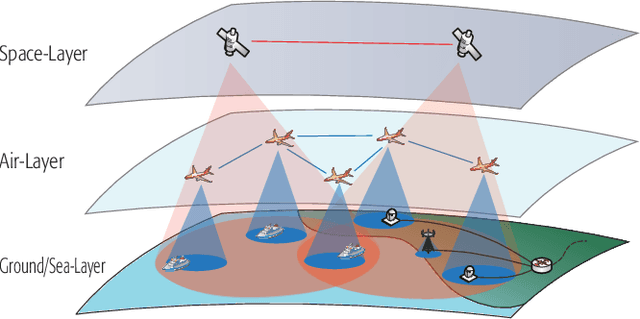
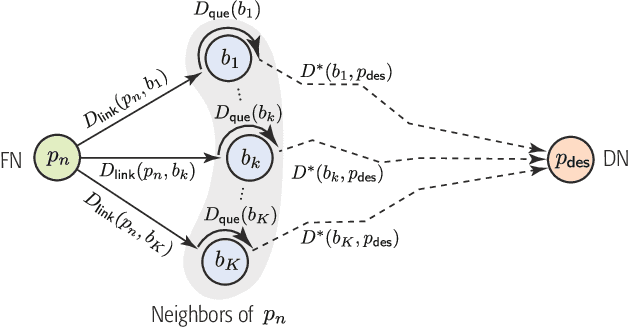
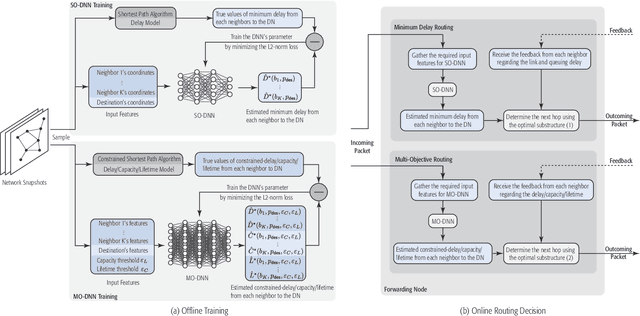
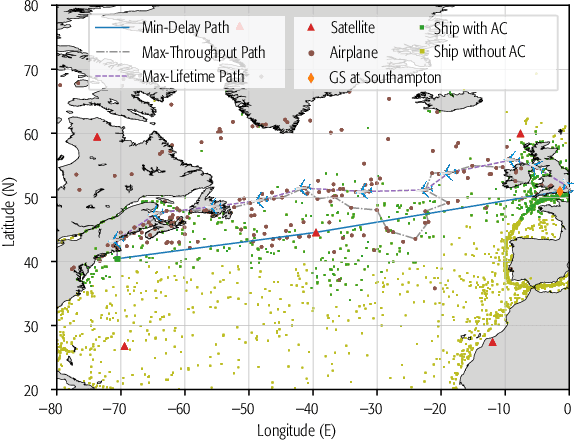
Abstract:Current maritime communications mainly rely on satellites having meager transmission resources, hence suffering from poorer performance than modern terrestrial wireless networks. With the growth of transcontinental air traffic, the promising concept of aeronautical ad hoc networking relying on commercial passenger airplanes is potentially capable of enhancing satellite-based maritime communications via air-to-ground and multi-hop air-to-air links. In this article, we conceive space-air-ground integrated networks (SAGINs) for supporting ubiquitous maritime communications, where the low-earth-orbit satellite constellations, passenger airplanes, terrestrial base stations, ships, respectively, serve as the space-, air-, ground- and sea-layer. To meet heterogeneous service requirements, and accommodate the time-varying and self-organizing nature of SAGINs, we propose a deep learning (DL) aided multi-objective routing algorithm, which exploits the quasi-predictable network topology and operates in a distributed manner. Our simulation results based on real satellite, flight, and shipping data in the North Atlantic region show that the integrated network enhances the coverage quality by reducing the end-to-end (E2E) delay and by boosting the E2E throughput as well as improving the path-lifetime. The results demonstrate that our DL-aided multi-objective routing algorithm is capable of achieving near Pareto-optimal performance.
A Locating Model for Pulmonary Tuberculosis Diagnosis in Radiographs
Oct 22, 2019



Abstract:Objective: We propose an end-to-end CNN-based locating model for pulmonary tuberculosis (TB) diagnosis in radiographs. This model makes full use of chest radiograph (X-ray) for its improved accessibility, reduced cost and high accuracy for TB disease. Methods: Several specialized improvements are proposed for detection task in medical field. A false positive (FP) restrictor head is introduced for FP reduction. Anchor-oriented network heads is proposed in the position regression section. An optimization of loss function is designed for hard example mining. Results: The experimental results show that when the threshold of intersection over union (IoU) is set to 0.3, the average precision (AP) of two test data sets provided by different hospitals reaches 0.9023 and 0.9332. Ablation experiments shows that hard example mining and change of regressor heads contribute most in this work, but FP restriction is necessary in a CAD diagnose system. Conclusion: The results prove the high precision and good generalization ability of our proposed model comparing to previous works. Significance: We first make full use of the feature extraction ability of CNNs in TB diagnostic field and make exploration in localization of TB, when the previous works focus on the weaker task of healthy-sick subject classification.
 Add to Chrome
Add to Chrome Add to Firefox
Add to Firefox Add to Edge
Add to Edge